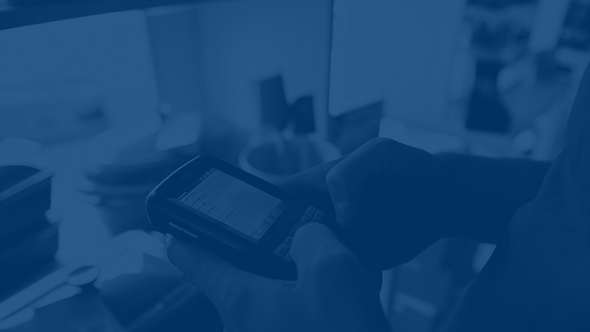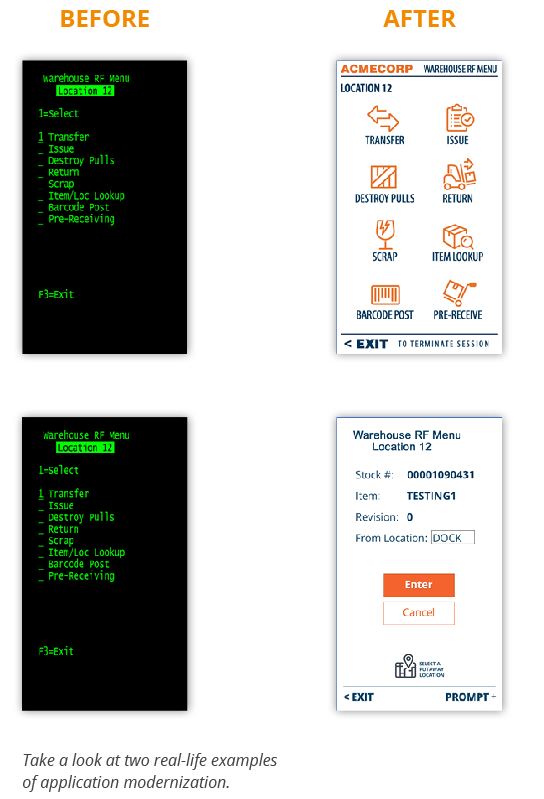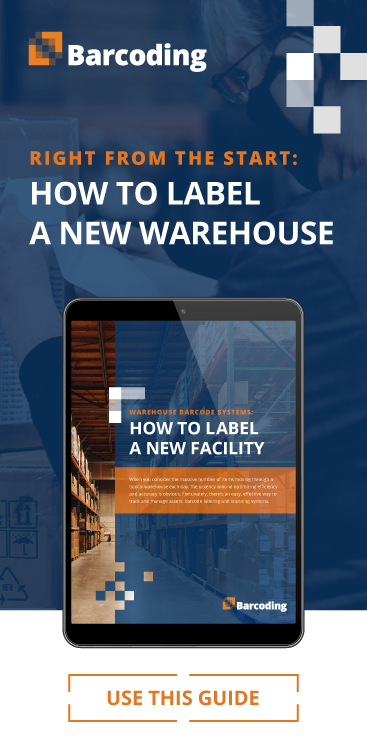An Ebook from Barcoding & Honeywell. A shift in the mobile operating system landscape has occurred over the last several years. The transition from legacy Windows® is well underway. While there remain several distinct choices on the road map, the trade-offs and compromises associated with each have become clearer.
History of Mobile Operating Systems
A SINGLE OPTION
Ten years ago, operating systems for mobile devices in the enterprise space were provided by Microsoft. Windows CE and Windows Mobile (later Windows Embedded Handheld) offered features and capabilities needed for enterprise deployment, while a robust ecosystem of developer tools and third-party offerings allowed customers to create the solution needed to effectively operate and manage their businesses.
Apple had only recently shown the first iPhone®. Google acquired Android™ a few years earlier and had yet to see a phone come to market. Other options available at that time were largely focused around the white collar professional user and proved largely unsuitable for the unique needs of the purpose-built enterprise environment. Windows proved to be a solid choice and was selected by the vast majority of customers deploying rugged mobile devices for line-of-business applications.
EMERGING SYSTEMS
The emergence of enterprise features in iOS and Android did not occur until several years later and initially evolved rather slowly while Apple and Google focused on the rapidly growing consumer phone market.
For the open source Android OS, Google OEMs and third parties began developing extensions that enabled device management capabilities, provided more control over user actions, and added support for industrial Wi-Fi networks and barcode scanning capabilities.
This enabled the first round of Android devices targeted at enterprise deployments, gave rise to several rounds of improvements, and broadened product offerings as customers reacted positively to user-friendly touch interfaces and a growing ecosystem of apps and developers.
NEW CHALLENGES
This entrepreneurial approach also gave rise to fragmentation. As the level of modification to the base operating system increased, the further it diverged from the standard, making it harder for applications to run across different vendors’ products and much less likely that highly modified devices would progress quickly to the next version of the base operating system.
Apple responded with its own management tools and enterprise enhancements to iOS, and has a large developer ecosystem. However, Apple’s closed system continues to have limitations in terms of controlling updates and managing some device features. Since hardware devices are limited to consumer phones and tablets, iOS is a viable solution for use cases that demand a mobile device that is only ruggedized via the addition of external caseworks.
Moving Forward with Multiple OS's
ENDING SUPPORT
Customers currently running applications that require a legacy Microsoft operating system (Windows CE 6 or Windows Mobile/Windows Embedded Handheld 6.5) will soon face the end of support for their platform. Mainstream support, which includes regular updates, has ended for both legacy systems. Microsoft extended support (security fixes) will end for Windows CE 6 in early 2018 and for Windows Embedded Handheld 6.5 in early 2020. After those dates, vendors will be unable to provide patches should a vulnerability or error be found in Microsoft code. For this and other reasons, many customers have begun planning a transition to new applications running under a modern operating system.
As end of support dates for legacy operating systems approach, customers need to make decisions and plans to move forward, as application development can require considerable time and effort.
MOVING FORWARD
One way to provide more time for these decisions is to select a hardware offering that can support multiple operating systems. The Honeywell CN75 and CK75 Series mobile computers, along with the Honeywell CN51 mobile computer, offer a choice of Windows Embedded Handheld or Android.
In addition, customers purchasing Windows Embedded Handheld can convert their devices to Android at a future date. This allows existing legacy applications to continue running until the organization is ready to move to Android, at which time a simple field-based software conversion is performed. Only a small investment in software is required; no changes are required to the hardware.
Android’s large market presence supports a broad variety of OEMs and hardware form factors, making it more likely that a device is available to meet the customer’s use case and cost requirements, including devices that offer integrated physical keypads.
The Evolution of Android for Enterprise
ENTERPRISE FEATURES
Prior to 4.0 Ice Cream Sandwich, Android offered little in the way of enterprise features. The consumer-focused operating system was augmented by OEM extensions and third-party software to allow it to be controlled and managed in the enterprise environment. Enterprise features gradually began appearing in 4.2 Jelly Bean and 4.4 KitKat releases, culminating with the introduction of Android for Work in 5.0 Lollipop. Android for Work provided an extended set of management APIs and a container system for separating and independently managing personal and work apps and data.
Google has continued investing heavily in enterprise capabilities in each of its last three versions, renaming Android for Work to Android Enterprise.
Added features include bulk provisioning to speed up device setup, Device Owner mode to allow fully managed devices at the corporate level, always-on VPN, and encryption enabled by default to protect personal and corporate data.
AN ECOSYSTEM OF APPS
Popular mobile operating systems such as Android enable companies to access a large ecosystem of applications, development tools, and resources, but also involve security risks that must be addressed and mitigated. Android has steadily evolved its approach to security. As its market share has grown, Android has become a target for exploits and malware attacks. Google has responded by increasing the protections to prevent the introduction of Potentially Harmful Apps (PHAs), as well as implement defenses inside the OS that limit the ability of the system to be compromised should a PHA be installed.
Find detailed information in Google's Android Security 2016 Year in Review.

Why Android Apps Now?
CONSUMER INFLUENCE
In the last several years we have seen a shift from purpose built business technologies evolving into consumer products—think Wi-Fi, Velcro and satellite communication systems—to consumer devices being adopted by businesses—such as the explosion of tablet computers and smart phones in use throughout the workplace.
In the case of mobile computing devices, a new category of device users was created—BYOD or “Bring Your Own Device.”
BRING YOUR OWN DEVICE
While the BYOD shift has advantages such as improved user interfaces, reductions in worker training, and lower capital investment requirements, it also places new burdens on IT organizations as they struggle to provide workers with the consumer application experience they have come to expect within the existing legacy business systems. In the case of BYOD, the pressure to mimic the consumer application experience is greatest as users move between their business and personal applications. However, this pressure is not unique to BYOD workers, as users of rugged mobile computers are requiring that their business applications work like their personal applications.
Businesses are encountering challenges that elevate the need for improving business application user interfaces, such as:
- Younger workers have higher technology expectations than older workers.
- Customers expect their vendors to utilize modern applications and processes to drive down supply chain costs.
- Technology is enabling new business models which are changing the business landscape (e.g., Amazon).
Application Modernization for Android
IMPROVING WORKSHOPS
Modernizing legacy applications not only provides improved worker and customer experiences, but also an opportunity to improve your processes and workflows, further increasing productivity and reducing costs.
Here is where the rubber meets the road: for many companies, the idea of replacing existing business applications is a daunting challenge that requires a significant investment of capital, resources, time, and disruption.
Here are a few reasons why companies resist modernizing their applications:
- They have invested hundreds of thousands of dollars to build and maintain their existing applications.
- Their existing IT staff is knowledgeable and skilled at supporting the existing applications.
- The lacking documentation and tribal knowledge have made it difficult to understand everything about the existing apps.
- Their business model has not changed, so they feel their application shouldn’t need to change either.
- They lack the funding and/or staff to implement new applications.
A FACE-LIFE FOR APPS
Fortunately, there is another option when it comes to upgrading existing applications. That option is application modernization.
Application modernization is like a face-lift. The applications that are at the heart of your operation remain unchanged, but the user interface layer (skin) is modernized. In addition to a new look and feel, you can also improve work processes and gather information that was previously unavailable.
MODERNIZING APPS
Here are few of the benefits of application modernization:
- No need to modify the host application code.
- Enhance existing workflows to improve productivity and lower costs.
- Connect new functionality from other applications.
- Gain information on employee productivity.
- Support mobile devices and PC work stations.
- Achieve additional productivity from new mobile device form factors.
You’re likely thinking this is too good to be true. Well, it is true! However, there is one caveat: your existing legacy application must rely on emulation (VT, 5250, 3270). Fortunately, a significant percentage of supply chain applications do exactly that, and if yours is one of them, then you can modernize your application with minimal investment of resources and virtually no risk.
Modernization Through Emulation
EMULATION TECHNOLOGY
Advances in emulation technology now enable us to provide your application with a modern user interface while maintaining and utilizing the underlying legacy application protocols and application code. Much like a face-lift that tightens your skin to provide you with a youthful appearance while maintaining the underlying muscle and skeletal system to control your smile and eye movements.
This new application layer exists on the surface of your legacy application, improving the application’s usability while using the existing application in its current form. In addition to improving the user interface, you can modify workflows to support new and improved processes as well as add previously unavailable functionality from other systems.
As if that’s not enough, you can also integrate event reporting to provide detailed reporting on individual worker productivity, such as:
- Transactions per hour (picks, put-aways, transfers, etc.)
- Transactions per shift
- Transactions per employee
- Average transaction time per employee
- Employee idle time
- Mobile device usage
HOW EMULATION WORKS
Popularized by IBM mainframe applications in the 1970s and standardized in the 1980s and 1990s, terminal emulation enabled mainframe applications to use simple display terminals as a user interface, which provided users with display options while standardizing how applications interface with users.
As personal and mobile computers became prevalent, software developers used the micro processing power of these devices to create software applications that “emulated” the prior generations of display terminals, thus creating a new category of application: “terminal emulators” or “terminal emulation,” as it is commonly referred to today. The advantage for business users is the ability to run their PC applications and mainframe applications on the same device.
As mobile computing devices have increased in processing power, emulation applications have leveraged this power to extend their capabilities. The most recent advancements provide methods to replace the traditional text based characters produced by the host application with full graphics. In doing so, the new emulators can convert these characters into icons, images, and graphical character sets, and then render or “paint” them onto the device screen to create an entirely new user experience.
Android Lifecycle Management for Hardware
LONGER USAGE CYCLES
Customers deploying mobile computer solutions in the rugged enterprise environment expect a longer usage cycle than consumers. Whereas smartphones in consumer use cases generally turn over in two to three years, enterprises are expecting their systems to last three to five years or longer. Historically, embedded operating systems used in rugged mobile computers had a lifecycle corresponding to enterprise use cases. Windows CE and Windows Embedded Handheld are supported by Microsoft for 10 years after initial introduction.
Although Android has been augmented by Google with a variety of new enterprise features with each major release, extended support is not among them. Android major versions (or “dessert releases”) occur on a roughly annual basis and are generally supported with security patches from Google and chipset vendors for a period of three years thereafter. This creates a gap in support coverage relative to enterprise expectations. Selecting OEM chipsets that are supported for subsequent dessert releases will help extend the timeline, but ultimately Google support policy stops short of enterprise customer expectations.
EXTENDED SUPPORT
Honeywell offers a program to provide patches for severe security vulnerabilities applicable to the supported operating system on a periodic basis for 2+ years after Google security patch support ends. The timing of delivery to their customers is quarterly or less, if no severe patches applicable to the supported operating system version are reported. Applicable patches are generally delivered within 90 days of public disclosure with exceptions possible for imminent threats.
For customers using Honeywell devices:
- Customers using this service are expected to apply all previously released patches in order to apply the most recent patch. Patches are cumulative relative to the most recent OS maintenance release.
- Security patches are tested following Honeywell standard test procedures for software releases. It is the customer’s responsibility to test any software updates to their satisfaction prior to deploying.
- Customers receive these benefits under the terms of a service contract. Customers without a contract would not receive security patches after Google security patch support ends.
This program is available on Honeywell devices running Android 6.0 Marshmallow and later, upon expiration of Google security patch support.
Conclusion: A Clear Choice
With its large market share and extensive ecosystem of apps, developers, and VARs, Android has become the clear choice for many enterprises in a variety of industries. Transitioning to Android involves writing new apps, adapting some workflows, and changing the mobile devices that workers use. This can be a lot to accomplish at one time.
Organizations who are unsure about moving to Android or who need more time to make the transition should consider hardware options that can support multiple operating systems, such as the Honeywell CN75 series, CK75 series, and CN51 mobile computer. These devices allow companies to continue using their Windows Embedded Handheld compatible applications until they’re ready to make the switch to Android.
Your Modernization Experts
Barcoding, Inc. is your modernization expert. Whether you’re looking to upgrade your hardware or considering application modernization, we’re here to help make you the hero.
Contact Us Today!
1-888-412-SCAN(7226)
info@barcoding.com
Learn More
Take Steps to Modernize




